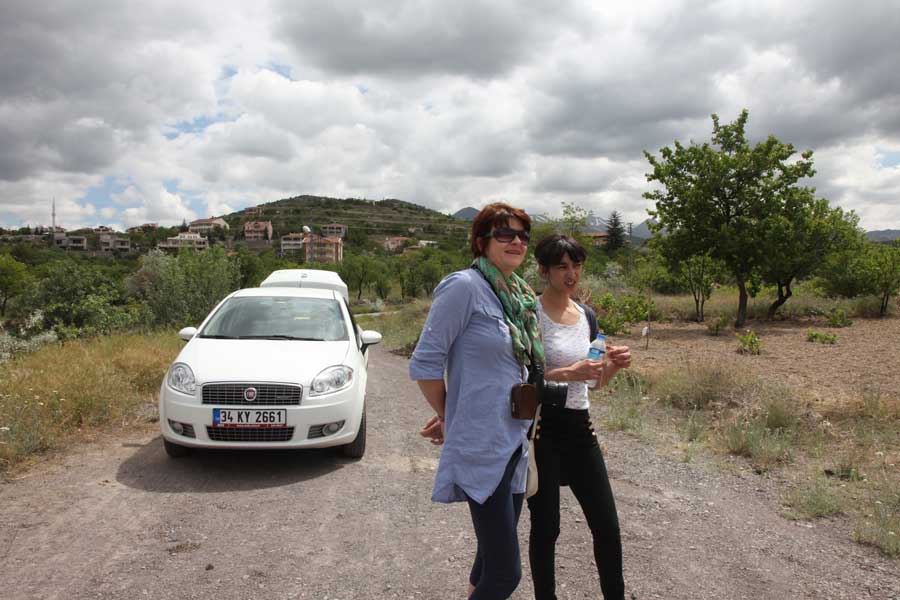Visual Field Research

Visual field research was an important methodological foundation for our project. On the one hand it provides access to interview partners and on the other is applied as a method itself. Recognisable deviations from the standard local construction style were an important indication for houses that might belong to German-Turkish returned migrants and a way to make initial contact with the person who built them as a possible interviewee. This was immediately successful in a number of cases, in some, contact was made via neighbours. The ‘snowball effect’ (Akremi 2014, 272) meant that we were then often informed about more potential interview partners who had also returned from Germany and built houses in the area.
The visual field research method was used to collect spatial data and photography and videography to collect static and moving images that were analysed later in the research. Visual field research uses both sociological and artistic practices. In the interdisciplinary team I led as a visual artist, visual field research was extended in a specific way: the project involved both the description of space from a visual cultural studies perspective and socio-spatial analysis all underpinned by an artistic understanding of spaces as place and space. The project follows Löw’s argument (2009, 354) that as symbolic agglomerations images are fundamentally based on materiality and as visual arguments provide interpretative models for political, historical and normative meanings, which must be sociologically linked back to the materiality of the constitution of space. Thus, visual field research describes and analyses the self-constitution of individuals in and through space.
The art and research project is funded by
